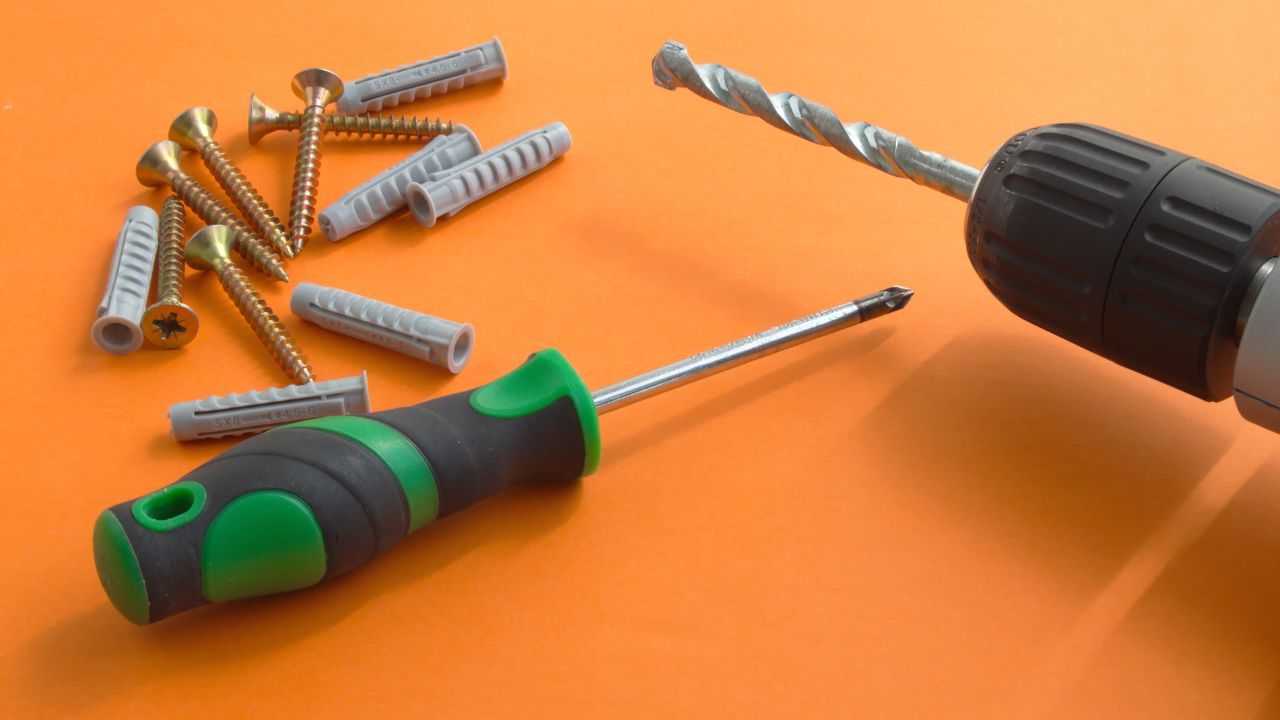Last Updated on October 16, 2023 by Pro Handyman Australia – Editorial Team
At a glance, both electric screwdrivers and drills, including the debate between rotary hammer vs hammer drill, are handheld tools designed to make various tasks easier, from screwing to drilling. The primary difference is their purpose: an electric screwdriver is specifically for driving screws, while a drill is versatile, designed for both drilling holes and driving screws. Now, let’s delve into the specifics.
Key Features of an Electric Screwdriver
An electric screwdriver, also known as a power or cordless screwdriver, is primarily for inserting screws. Some notable characteristics are:
- Efficiency: Drives screws more rapidly than manual screwdrivers and reduces arm fatigue.
- Compact Design: Perfect for tight spaces and users who find larger power tools cumbersome.
- Functionalities: Equipped with a forward/reverse switch, adaptable to various bits, and designed with ergonomic configurations like barrel, pistol grip, and swivel handle.
Evolution of Electric Screwdrivers and Power Considerations
Electric screwdrivers have come a long way since their initial AA battery-powered models. Today’s versions offer:
- Battery Options: When pondering how long cordless drill batteries last, one has choices between integrated rechargeable batteries and detachable ones.
- Cost vs. Convenience: Integrated batteries are budget-friendly but might need frequent recharging, while detachable batteries offer continuous work via swapping.
- Performance Metrics: When picking a screwdriver, consider its voltage for power and ampere-hour for battery life. Some even come with adjustable torque settings for tailored power.

In-depth Understanding
An electric screwdriver is a versatile tool primarily designed for various repair and assembly tasks that would otherwise necessitate a manual screwdriver. When you utilize an electric screwdriver, you benefit from the increased power and torque, enabling you to insert screws with greater speed and less physical effort. This makes electric screwdrivers particularly suitable for:
- Small-scale projects where precision is paramount, such as assembling toys or furniture, fitting blinds, putting in new cabinet fixtures, or adjusting a wobbly cabinet door hinge.
- Projects that involve tight or hard-to-access spaces due to their compact design.
However, it’s worth noting that these screwdrivers may not be the best choice for more intensive tasks. Their power levels aren’t geared towards driving in longer screws, for example.
The Drill: Versatile and Powerful
An electric drill is more versatile than a screwdriver, allowing both drilling and screwing tasks. It features:
- Chuck with Adjustable Jaws: This lets users switch between different bits easily.
- Functionalities: Equipped with a forward/reverse switch, and speed setting options for tasks that require either drilling or fastener driving.
Torque Mechanics
The torque generated by a drill, essentially its rotational force, can be tailored to your specific needs. Most drill models come equipped with a clutch or a torque setting that allows users to refine the exerted rotational force by the electric motor. This is particularly crucial because once the clutch reaches its predetermined setting, it prevents the motor from applying further force to the bit. This mechanism ensures screws aren’t overly tightened, thereby minimizing the risk of stripping the screw’s head. A stripped screw head implies damage that makes it unturnable.
Corded vs. Cordless Drills: Weighing the Pros and Cons
Drills can be broadly categorized into two types: corded and cordless.
- Corded Drills: These are plugged directly into an electrical outlet and tend to offer superior power and torque when compared to their cordless counterparts. However, their primary limitation lies in the length of their cords, which can restrict mobility.
- Cordless Drills: These are battery-powered, eliminating the hassle of maneuvering around cords. They provide great convenience, but the duration of their operation is bound by the battery’s charge. It’s worth noting that these drills usually utilize high-voltage lithium-ion batteries. These batteries can range from 14V to 24V in voltage and 1.5 to 5.0Ah in amp-hour ratings. Remember, a higher voltage battery offers a faster spin and more torque. Similarly, the higher the amp-hour rating, the longer the battery’s lifespan between charges.
When considering the purchase of a power drill, costs can be variable. While more basic models might be priced around $50, premium, professional-grade drills can sometimes demand prices over $200.
Diverse Applications
Drills are multifaceted tools, optimized for strenuous tasks. This makes them the preferred choice for heavy-duty carpentry, woodworking, and comprehensive home improvement projects that necessitate both driving fasteners and crafting holes.
Typically, drills are employed for:
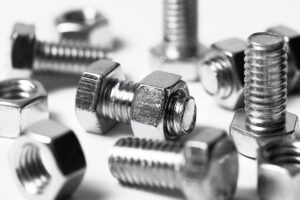
- Driving screws or bolts into materials such as wood or metal. This can be achieved using various driver bits, including flathead, Phillips, square, and star-shaped among others.
- Drilling holes in a myriad of surfaces like drywall, softwood, hardwood, metals, or plastics. With the right drill bit, users can execute various tasks:
- Crafting countersink holes for screws.
- Producing larger holes for plumbing through a hole saw.
- Boring holes in studs for electrical purposes using a spade bit.
- Designing holes for woodworking projects with a Forstner bit.
However, for tasks like drilling into concrete or brick, a specialized tool called a hammer drill, equipped with distinct drill bits, is required. While the hammer drill shares similarities with the impact driver, its primary function is drilling holes rather than fastening.
Beyond the standard functions, drills can be paired with an assortment of accessories, expanding their utility to include roles like rotary sanding, using wire-wheel brushes, leveraging right-angle attachments, employing flexible drive shafts, and more.
Hands-On User Experience with Screwdrivers and Drills
When it comes to understanding the real-world differences between screwdrivers and drills, there’s nothing quite like a hands-on user experience. Here are two compelling user accounts that highlight the nuances and practicality of these tools:
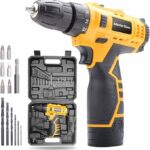
Tom’s Experience with the MasterSpec 12V Cordless Drill Driver Screwdriver: Tom, an amateur furniture builder, recently purchased the MasterSpec 12V Cordless Drill Driver Screwdriver. “I’ve used standard electric screwdrivers in the past, but the MasterSpec 12V Cordless Drill Driver Screwdriver model was a game-changer for my DIY projects,” he noted. “Its ergonomic design ensured minimal hand fatigue, even after hours of assembly.”
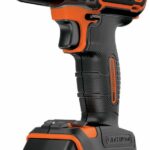
Anna’s Journey with the BLACK+DECKER Drill Autosense Case 90 Minute: Sarah, who dabbles in home renovations, shared her experience with the BLACK+DECKER Drill Autosense Case 90 Minute. “When it came to mounting shelves or drilling into hardwood, the BLACK+DECKER Drill Autosense Case 90 Minute was powerful, steady, and reliable. I was initially worried about its weight, but to my surprise, it was fairly lightweight and easy to handle.”
These firsthand accounts underscore the importance of choosing the right tool for the job, keeping in mind both the task at hand and the user’s comfort.
In-depth Comparisons of Top Hammer Drills
Delving deeper into the intricacies of hammer drills, we’ve put together a table comparing some of the leading models in the market:
| Model | Power | Battery Life | Price | Features |
|---|---|---|---|---|
| BLACK+DECKER Drill Autosense Case 90 Minute | 650W | 4 hours | $150 | 3-mode operation, LED light |
| Makita 40V Max Brushless Impact Driver | 700W | 3.5 hours | $170 | Anti-vibration system, Fast Charge |
| Bosch Professional GSR 12V-35 HX Cordless Drill System | 600W | 5 hours | $140 | Dual speed, Compact design |
| RYOBI ONE 18V Cordless Drill | 680W | 4.2 hours | $165 | Brushless motor, Variable speed dial |
The choice of a hammer drill largely hinges on individual preferences and project requirements. While the BLACK+DECKER Drill Autosense Case 90 Minute is renowned for its steady power, the Bosch Professional GSR 12V-35 HX Cordless Drill System stands out for its prolonged battery life.
Advantages and Drawbacks
Cordless Electric Screwdrivers
Advantages:
- They offer enhanced speed, less physical effort, and superior torque compared to manual screwdrivers.
- Their compact design ensures they’re perfect for reaching into confined spaces.
- They shine in tasks demanding precision.
- Their lightweight build makes them suitable for users who might struggle with the heft of a larger drill.
- Most come with the convenience of rechargeable batteries.
Drawbacks:
- They are limited to accepting 1/4-inch hexagonal bits.
- They may not have the power needed for more intense tasks.
- They offer less torque when compared to electric drills.
Drill
Advantages of Using a Drill:
- Drills are innately more powerful compared to electric screwdrivers.
- They are designed to handle rigorous tasks such as drilling expansive holes or driving lengthy screws into materials.
- They can accommodate an array of bits, ranging from circular to hexagonal.
- Customers have the option of choosing between corded and cordless drill models, based on their preference and requirement.
- Most drills come equipped with customizable settings for speed and torque.
Drawbacks of Using a Drill:
- In terms of cost, drills are usually pricier than electric screwdrivers.
- Due to their robust build, they tend to be heavier and bulkier.
- The mobility of corded drills is restricted by the length of their cords.
- Cordless or battery-powered drills have a finite operational time, determined by their battery’s charge.
Electric Screwdriver vs. Drill: Making the Right Choice
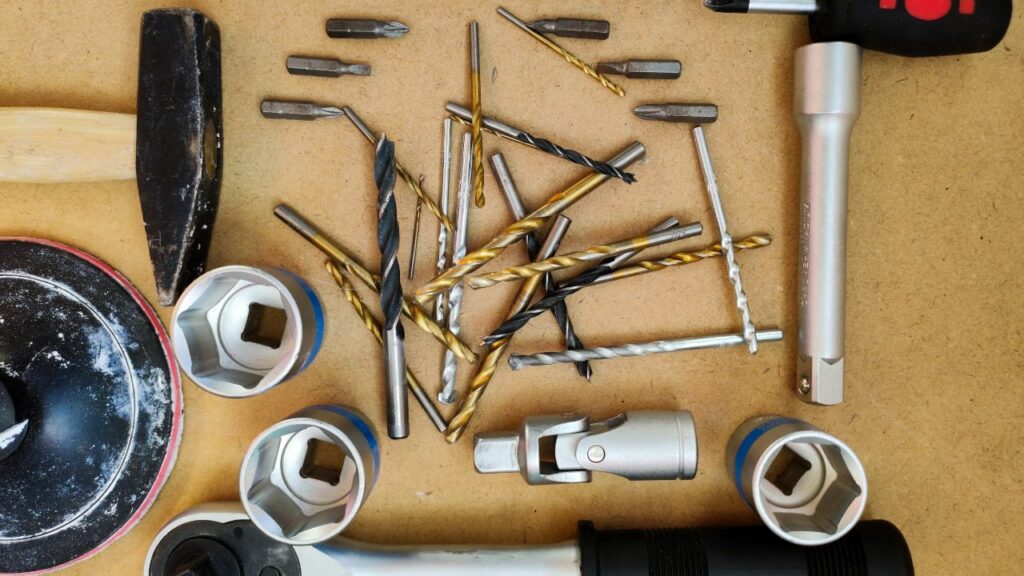
Distinguishing Features
Having acquainted ourselves with the specifics of both electric screwdrivers and drills, it’s time to discern the differences that set them apart.
- Speed and Torque:
The fundamental differentiation between a drill and an electric screwdriver lies in their operational speed and torque capabilities. While electric screwdrivers are typically slower and exhibit lower torque, drills are engineered for rapid spins and augmented rotational power. This discrepancy stems from their battery voltage—indicative of the potential power it can dispense. Naturally, a battery with a higher voltage will lead to increased speed and torque. For context, electric screwdrivers usually operate within a voltage range of 4 to 10 volts, whereas drills function between 14 to 24 volts.
- Intended Use:
Electric screwdrivers can be perceived as modern iterations of manual screwdrivers. They excel in tasks that require precision, such as assembling furniture or mounting window fixtures. Conversely, the heightened power of drills makes them the tool of choice for intensive tasks like drilling broad holes or driving long screws into dense materials. Similarly, knowing how to use a circular saw is invaluable for those looking to make precise cuts in a variety of materials, highlighting the importance of choosing the right tool for each task.
- Bit Holding Mechanism:
The mechanism responsible for holding the bit, especially among types of wood drill bits, is another distinguishing factor. Electric screwdrivers possess a collet designed exclusively for 1/4-inch hex shank bits. In contrast, drills come with a versatile chuck with adjustable jaws, capable of securing both hexagonal and round bits.
- Size and Ergonomics:
At first glance, the disparity in size between electric screwdrivers and drills is evident. Electric screwdrivers, with their compact build, are more maneuverable and suitable for prolonged usage. The bulkier drills, however, can be challenging in confined spaces and might not be the best choice for those suffering from conditions like carpal tunnel syndrome.
- Expense:
Cost-wise, electric screwdrivers are generally more affordable, with prices fluctuating between $30 to $100. Drills, depending on their specifications, can set you back anywhere from $50 to beyond $200.
- Versatility in Tasks:
In terms of adaptability, drills emerge as the undisputed champions. Their ability to accommodate different types of drill bits, coupled with compatibility with diverse accessories such as scrubbing brushes and socket drivers, underlines their versatility. Electric screwdrivers, while a valuable tool, primarily focus on the driving and extraction of screws.
Choosing the Right Tool for Your Needs
When faced with the decision of selecting between an electric screwdriver and a drill, or even delving deeper into the hammer drill vs impact driver debate, various factors come into play. These include your set budget, the nature of projects you aim to undertake, and the frequency of the tool’s use.
For individuals seeking a tool tailored for tight spots or light-duty household activities such as assembling ready-made furniture or setting up blinds, an electric screwdriver is the optimal choice. These tools are cost-effective, user-friendly, and adept at managing smaller tasks with ease.

However, if your sights are set on more ambitious projects—like crafting large holes or securing screws into rigid materials—a drill from the spectrum of different types of drills is the recommended tool. Beyond its formidable power, a drill provides versatility that an electric screwdriver can’t match, catering to a broader range of tasks due to the diverse functionality offered by drills. The compatibility with varied accessories, including right-angle attachments and flexible drive shafts, further accentuates its appeal, making it an indispensable tool for those demanding projects.
To sum it up, for light-duty endeavors, electric screwdrivers shine, whereas drills dominate when it comes to heavy-duty tasks. Therefore, base your decision on the projects you’ll frequently encounter and select the tool best suited for your work.
Can Electric Screwdrivers Double as Drills?
While electric screwdrivers aren’t inherently designed to serve as drills, they can, in a pinch, be used to create pilot holes in materials like wood, plastics, or softer metals such as aluminum. These pilot holes serve as starting points for screws or more substantial drill bits. But there are some challenges: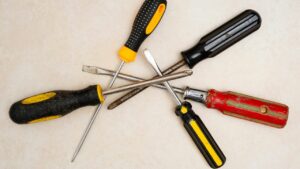
- Electric screwdrivers are equipped to accept hex-shaped bits, and a lot of drill bits come in a round shape.
- Electric screwdrivers have a slower rotational speed compared to traditional drills, making hole creation more challenging.
For those often tasked with creating holes, especially larger ones, a dedicated drill is almost always recommended due to its enhanced power and speed capabilities.
Frequently Asked Questions
Is there a difference between an electric screwdriver and a drill?
Indeed, there’s a distinction between electric screwdrivers and drills. The former is generally more compact and lightweight, predominantly used for driving screws. In contrast, drills, characterized by their larger size and augmented power, are adept at drilling holes and managing robust screws.
Which is the superior tool: a power screwdriver or a drill?
The supremacy between a power screwdriver and a drill is contingent on the nature of the task. Power screwdrivers excel in light-duty tasks like assembling pre-packaged furniture or hanging blinds. Conversely, drills come to the fore for demanding tasks, including drilling into hard materials or fixing screws into timber.
Wrapping It Up
Both electric screwdrivers and drills, each with their specific types of bits for drills, hold their merit; however, it’s essential to understand that they aren’t substitutes for each other. Your budget, the kind of tasks you’re aiming to tackle, and the tool’s anticipated frequency of use should guide your choice. While electric screwdrivers cater wonderfully to lighter tasks, drills are the go-to for more intensive projects, particularly when substantial holes are involved. Ensure your chosen tool aligns with your requirements, enabling you to execute tasks efficiently and achieve impeccable results.
